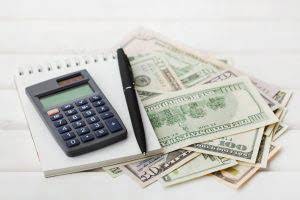Content
- Join over 140,000 fellow entrepreneurs who receive expert advice for their small business finances
- Is accumulated depreciation an asset or liability?
- Declining balance method
- Is Accumulated Depreciation a Current Asset or Fixed Asset?
- Is Accumulated Depreciation an Asset or Liability?
- How to calculate accumulated depreciation
- What is Accumulated Depreciation?
- Accumulated Depreciation and the Sale of a Business Asset

Having this $1,000 expense on the income statement allows you to match the cost of the asset with the revenues it produces. Accumulated depreciation of an asset is an important financial metric for the business as it reduces a firm’s value on the balance sheet. You won’t see “Accumulated Depreciation” on a business tax form, but depreciation itself is included, as noted above, as an expense on the business profit and loss report.

Eventually, when the asset is retired or sold, the amount recorded in the accumulated depreciation and the asset’s original cost will be reversed. This will eliminate all asset records from your balance sheet, which is vital as it prevents the building up of massive gross fixed asset costs and accumulated depreciation on your balance sheet. In that case, you will debit the depreciation expense and credit the accumulated depreciation for the same amount to reflect https://www.bookstime.com/ the asset’s net book value on the balance sheet. Subtracting accumulated depreciation from an asset’s cost results in the asset’s book value or carrying value. Hence, the credit balance in the account Accumulated Depreciation cannot exceed the debit balance in the related asset account. Accumulated Depreciation is also the title of the contra asset account. Accumulated Depreciation is credited when Depreciation Expense is debited each accounting period.
Join over 140,000 fellow entrepreneurs who receive expert advice for their small business finances
Long-term assets that can be depreciated include buildings, machinery, equipment, furniture, and vehicles. At the end of the year, Company A uses the straight-line method to calculate the depreciation for the van, arriving at an annual expense of $2,000 ($20,000 purchase price / 10 years accumulated depreciation of useful life). If an asset is sold or reaches the end of its useful life, the total amount of depreciation that has accumulated in the contra-asset over time is reversed. The IRS requires businesses to depreciate specific assets using the Modified Accelerated Cost Recovery System .
- To find accumulated depreciation, look at the company’s balance sheet.
- Current assets are not depreciated because of their short-term life.
- In other words, if you purchased an asset for $10,000, and there has been accumulated depreciation of $6,000, it does not mean your asset is now worth $4,000.
- Accumulated Depreciation is credited when Depreciation Expense is debited each accounting period.
- Accumulated depreciation is simply the total amount of an asset’s cost that has been depreciated since the asset was purchased.
- Using the straight-line method, accumulated depreciation of $2,000 is recognized.
It is a type of contra account because the balances stored in the accumulated depreciation account represent the amount of economic value that has been consumed in the past. Contra asset accounts usually have zero or negative account balances. Nevertheless, they also account for assets equalizing and balancing one another out to attain a net value. Accumulated depreciation as a contra asset account increases as long-term fixed assets depreciates in value. Companies, thereby, record the accumulated depreciation on their balance sheet which is likely to reduce the company’s gross fixed assets. The accumulated depreciation account is a contra asset account on a company’s balance sheet. It appears as a reduction from the gross amount of fixed assets reported.
Is accumulated depreciation an asset or liability?
For example, if a company’s machinery has a 5-year life and is only valued $5000 at the end of that time, the salvage value is $5000. Let’s take a look-see at an accumulated depreciation example using the straight-line method. For tax purposes, the IRS requires businesses to depreciate most assets using the Modified Accelerated Cost Recovery System . Using the straight-line method, you depreciation property at an equal amount over each year in the life of the asset. To illustrate, here’s how the asset section of a balance sheet might look for the fictional company, Poochie’s Mobile Pet Grooming.
- Let’s say you have a car used in your business that has a value of $25,000.
- In this method, you depreciate an asset at an equal amount over each year across its useful life.
- The balance sheet provides lenders, creditors, investors, and you with a snapshot of your business’s financial position at a point in time.
- Thus, after five years, accumulated depreciation would total $16,000.
- In accordance with accounting rules, companies must depreciate these assets over their useful lives.
- Depreciation is an accounting entry that represents the reduction of an asset’s cost over its useful life.
Since this is a balance sheet account, its balance keeps accumulating. Therefore, after three years the balance in Accumulated Depreciation will be a credit balance of $27,000 and the vehicle’s book value will be $23,000 ($50,000 minus $27,000). To find Year 2, subtract the total depreciation expense from the purchase price ($50,000 – $8,000) and follow the same formula. Depreciation expense is considered a non-cash expense because the recurring monthly depreciation entry does not involve a cash transaction.
Declining balance method
After the 5-year period, if the company were to sell the asset, the account would need to be zeroed out because the asset is not relevant to the company anymore. Therefore, there would be a credit to the asset account, a debit to the accumulated depreciation account, and a gain or loss depending on the fair value of the asset and the amount received. There are two main differences between accumulated depreciation and depreciation expense. First, depreciation expense is reported on the income statement, while accumulated depreciation is reported on the balance sheet. Depreciation is the method of accounting used to allocate the cost of a fixed asset over its useful life and is used to account for declines in value.
- Below is data for calculation of the accumulated depreciation on the balance sheet at the end of 1st year and 3rd year.
- It is not an asset, since the balances stored in the account do not represent something that will produce economic value to the entity over multiple reporting periods.
- Basically, accumulated depreciation is the amount that has been allocated to depreciation expense.
- Each period is added to the opening accumulated depreciation balance, the depreciation expense recorded in that period.
- Hence, accumulated depreciation is calculated as the sum of depreciation expenses recognized over the life of an asset.
- Bench assumes no liability for actions taken in reliance upon the information contained herein.

